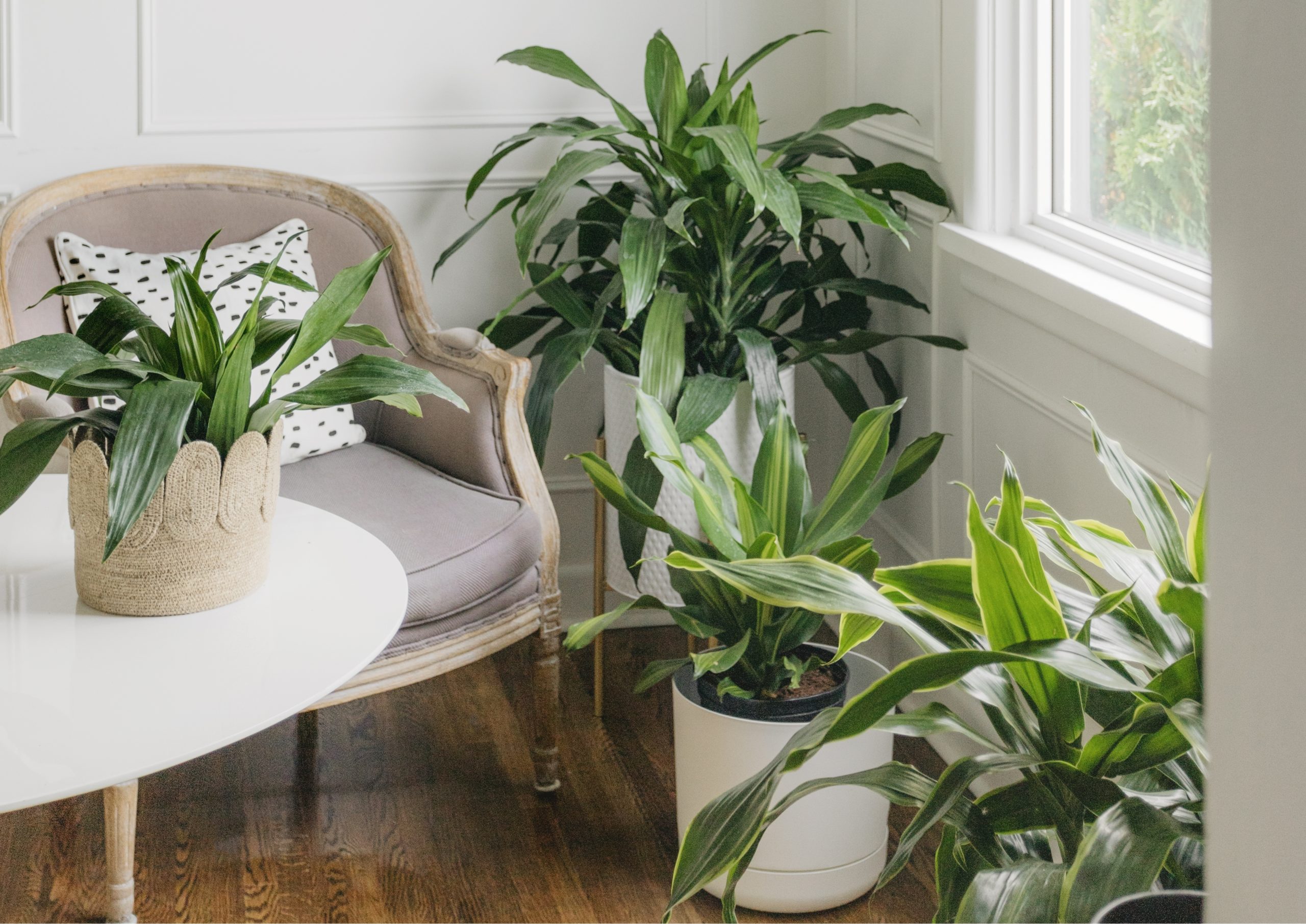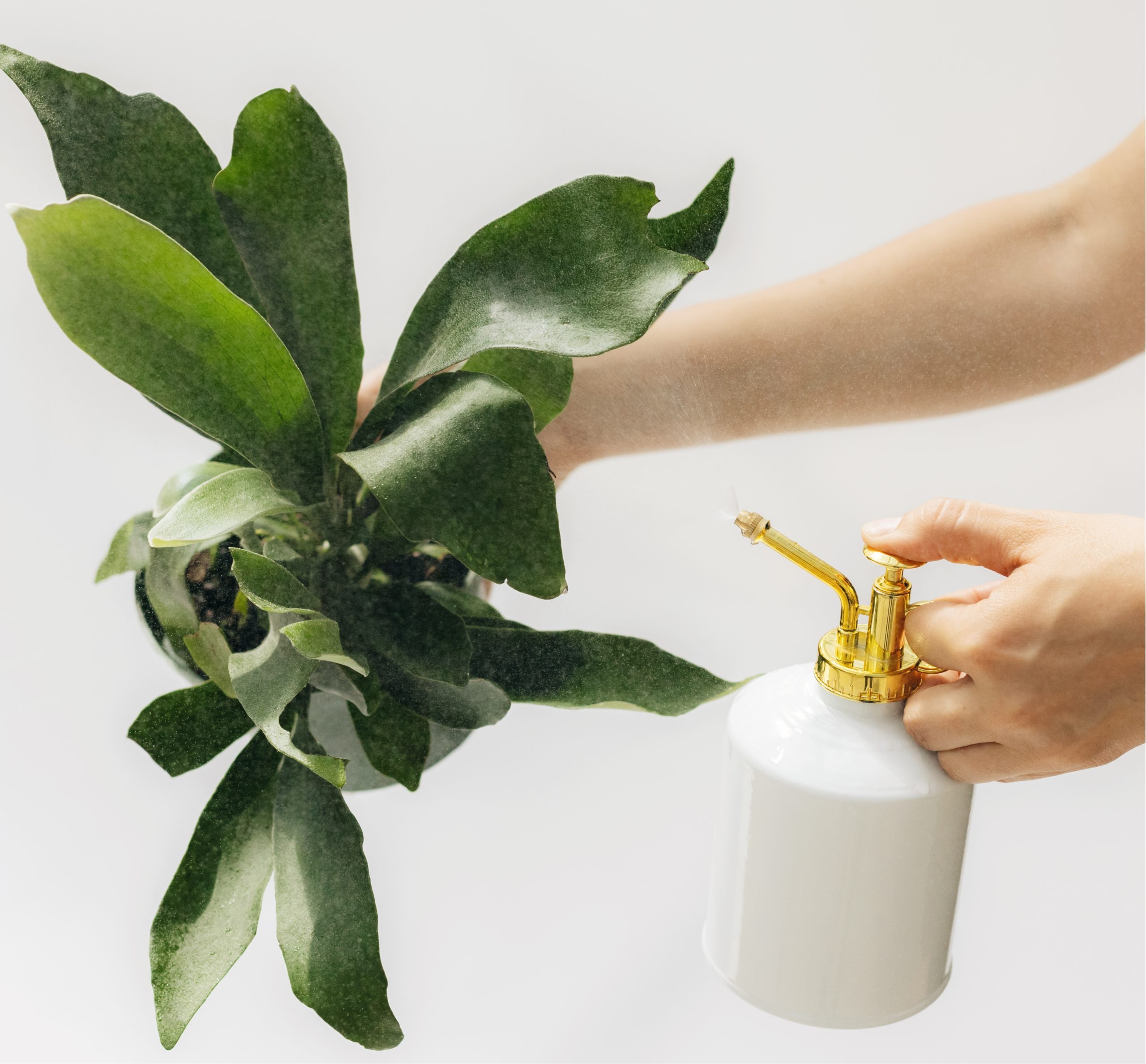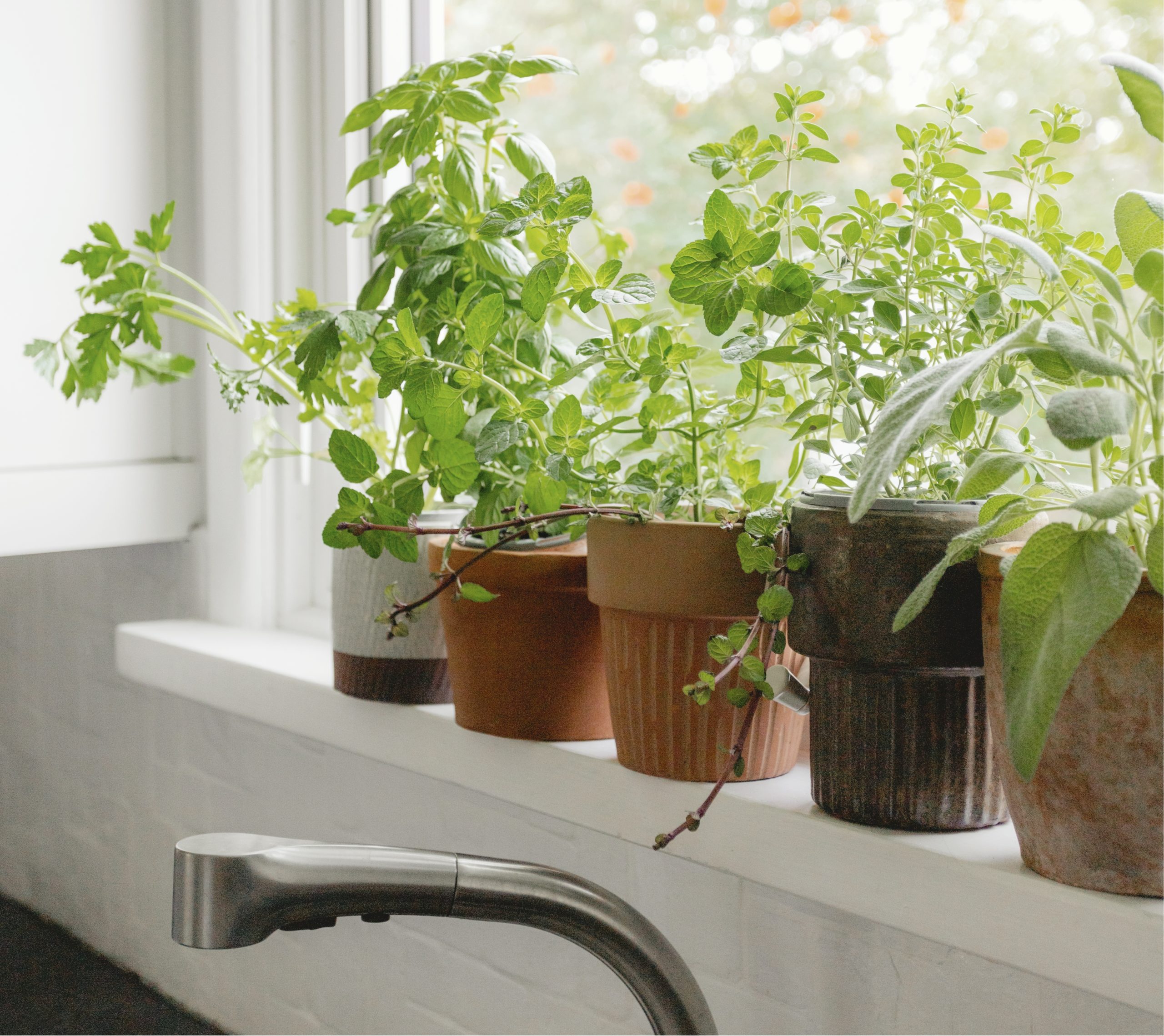The days are getting shorter, the air is getting colder, and suddenly we’re staring down the barrel of a long winter – (sigh). We’re not the only ones who struggle with the onslaught of winter – houseplants are challenged too! Our winters offer less than ideal growing conditions, so to keep your plant babies healthy and happy, you need to adjust your winter plant care routine for healthy houseplants. Here’s how:
Change Your Watering Routine
Indoor plants need far less water during the winter than they do the rest of the year. Let’s translate that into human terms. In the summertime you go for walks, bike rides, and play outside – you’re active and therefore you’re thirsty! Plants experience the same thing. In the spring and summer, they’re actively growing, so they’re thirsty and need more water to thrive. But once the cold weather arrives, they’re activity and growth rate significantly slows down. So until late February, adjust your watering routine by watering less frequently and with less water. This will also reduce chances of having fungus gnats in your soil as they thrive and lay eggs in moist soil.
Increase Humidity
Low humidity is probably the biggest hurdle to overcome in regards to winter care for your houseplants. The humidity level in heated homes can drop to 10 to 20 percent in winter and plants prefer a level closer to 50 percent. Consider mitigating this by adding a humidifier in your home, and move your plants to a spot where they will enjoy its benefits. Without a humidifier, you’re going to need to raise the humidity level by other means, such as by clustering your plants in groups. Plants naturally release water through their leaves by transpiring, so grouping them together will increase humidity. Bathrooms and kitchens tend to have higher humidity levels because that’s where we run the taps. Consider these rooms as options if they offer enough sunlight to your plants.
Watch the Temperature
Most plants enjoy daytime temperatures between 65 to 75 degrees Fahrenheit and nighttime temps above 50 degrees Fahrenheit – very similar to the temperatures that humans enjoy. To provide those temperatures for your plants, keep them away from both cold drafts and sources of heat, like exterior doorways, radiators, ovens, fireplaces, and electronic heaters. A big part of winter care for healthy houseplants is temperature, fluctuations in temperature are a big no-no and can kill houseplants!
Follow the Sun
Not only are there fewer sunlight hours during winter, it also comes into our homes at a lower angle. You might need to relocate your houseplants to a brighter room or even add supplemental light. South or west facing windows typically offer the best lighting in winter. Each time you water your plant, rotate the pot so that all sides of the plant get some sun and to keep the plants growing evenly, rather than stretching unevenly to reach the light.
Put Your Plants On A Diet
Since your plants will barely be growing at all from October through April, they don’t need any fertilizer at all. Feeding them during these months will just upset their natural cycle and confuse them, so hold off until early spring. We suggest stopping all fertilization between Thanksiving and Easter. When your plant babies start to show you signs of new growth, resume fertilizing, to give them a boost for the growing season.
Chill Out, Plant Lover!
Whatever you do, don’t fuss over your plant family too much or as we say ‘kill them with kindness’. Consider winter an off-season for your houseplants and let them rest. Sit back and admire them, enjoy their warmth and positivity. Let your eyes soak in the beauty of green. They will love you for it!
Sending you and your plant family lots of love this winter!
xo Team Shelmerdine



